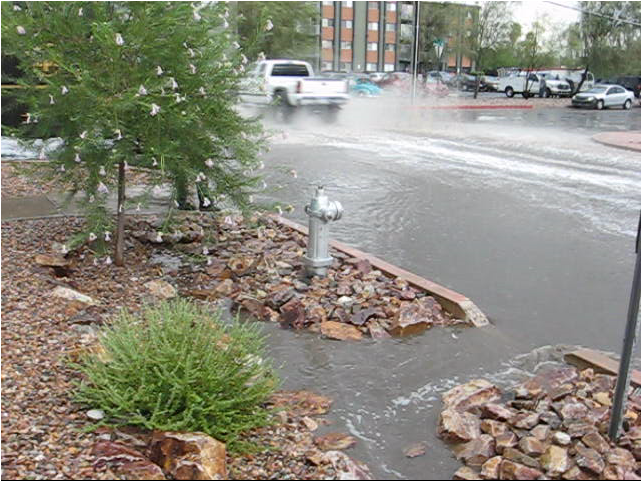
When you run water from your tap or flush your toilet, you assume that after it washes through your drains it’s safely being stored (septic) or treated (sewer) to prevent unsafe water pollution.
You have the luxury of not dwelling on the fate of your used water, in part, because Pima Association of Governments conducts water quality management planning to ensure regional coordination and policymaking for the safety of everyone in the area.
PAG celebrated a milestone in that effort June 8 when the U.S. Environmental Protection Agency approved PAG’s comprehensive update to the Areawide Water Quality Management Plan. It’s also known as the 208 Plan because it’s required in Section 208 of the federal Water Pollution Control Act/Clean Water Act. PAG is the designated water quality planning agency for our region, coordinating pollution prevention from wastewater sources, including industrial, sanitary sewer and urban stormwater runoff sources.
In the past, some Tucson-area landfills were situated alongside rivers, and there was frequent dumping straight into the waterway. A major environmental disaster in Ohio earned national attention when the polluted Cuyahoga River caught on fire. The incident, in part, prompted Congress to create the Clean Water Act in 1972, and Section 208 protects our waterways and water discharges today by requiring regional collaboration.
“The role of a regional water quality management agency is critical for water quality, and it even helps with water reliability. Small, private plants and septic systems had a poor track record of upkeep historically, so Section 208 encourages large, public wastewater facilities,” said Mead Mier-Welborn, PAG’s sustainability coordinator. “Pooling resources resulted in a clean, restored river that our community enjoys and resources for recharge and reclaimed water that we rely on for sustainability.”
“We have policies and procedures that we go through to ensure there isn’t anything really harmful getting into our waterways through both direct and indirect discharges into our waterways,” said Melanie Alvarez, a planner at PAG. “We take an integrated approach to show how everything is connected, and how different groups throughout our region can coordinate and try to improve our entire region’s water quality.”
The plan update did not alter existing policies, but focused on streamlining the procedures for efficient permit review, updated data and modernized the data sources, such as online interactive maps.
“We wanted tools available online that are easier to access and update as changes are made,” Alvarez said.
As the region’s planning agency, PAG is tasked with reviewing water discharge permits for consistency with local policies, to aid local participation and ensure regional agreements are in place. If needed, PAG’s Watershed Planning Subcommittee and Environmental Planning Advisory Committee, each composed of members from a variety of disciplines and sectors, will review the proposal to ensure it does not impact others. Permits will be elevated to the Regional Council as needed.
“That’s what regional, integrated planning looks like,” Mier-Welborn said.

